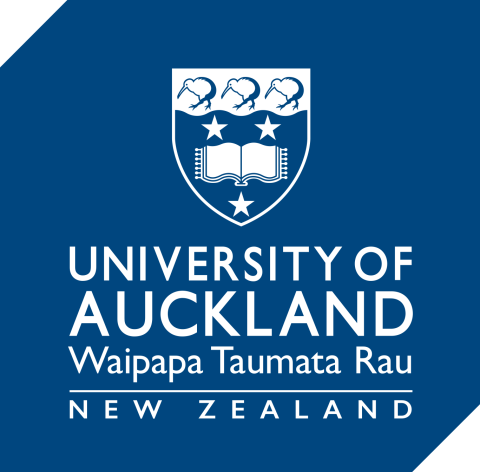
What does a 21st-century research and science system look like?
One of Albert Einstein’s many gifts was being succinct. He once said: “If we knew what we were doing, it would not be called research, would it?” Our research sector is far from alone in grappling with the follow-up questions: who are we doing research for and to what end?
New Zealand’s Ministry of Business, Innovation and Employment has recently launched Te Ara Paerangi – Future pathways, which provides insights on how to transform the country’s research, science and innovation system. The goal should be clear: we need to create a much larger and more capable research and innovation ecosystem that embodies Te Tiriti (New Zealand’s founding document, the Treaty of Waitangi), makes best use of existing research capabilities, nurtures the next generation of talented thinkers and doers and empowers our researchers to share their mana and knowledge alongside the best in the world. This is a once-in-a-generation opportunity to get it right.
New Zealand – Aotearoa in Māori – weathered the pandemic with one of the world’s best responses. New Zealanders and political leaders largely trusted the evidence that guided decisions. This evidence came from researchers at universities and crown research institutes bringing together their knowledge of epidemiology, data modelling, genomics and immunology.
- Research excellence collection: what is it and how can universities achieve it?
- Five steps for engaging policymakers with research
- The challenges of creating a multidisciplinary research centre and how to overcome them
The pandemic is only the latest in a series of urgent and seemingly intractable challenges: climate change, worsening intergenerational poverty, a housing crisis, health inequity, an ageing population, the loss of biodiversity and the need for sustainable practices and economic diversification in a world with broken supply chains and wounded economies.
There is considerable room for improvement. Aotearoa New Zealand sits 44th in the world in the percentage of GDP expenditure devoted to research, well behind other Small Advanced Economies (SAEs) such as Sweden, Finland, Iceland, Singapore, Slovenia and Estonia.
The role and scale of research and innovation from those countries belies their size and populations. There are lessons to be learned, but we also need to find unique answers that reflect the values and strengths of the people of Aotearoa New Zealand.
What would a truly transformative research, science and innovation sector look like?
With the example of our pandemic response and the lessons from competing small and advanced economies, there is a good argument for the need to concentrate research, consolidating what we have and identifying disciplines and sectors with high potential. National collaborations such as the Centres of Research Excellence (CoREs) and National Science Challenges (NSCs) are attempts at this. The latter cross-disciplinary, multi-institution programmes focus on areas where the country may or may not have outstanding research capability, but where it is strategically important to build on what is there.
Rather than institutions competing for individual projects from a limited pool of funding, these collaborations build a cohesive whole-system approach to research, integrating Crown Research Institutes and universities into hubs of excellence with a critical mass of researchers and disciplines.
Placing research at the heart of policymaking
A longer-term challenge is that this resulting research, science and innovation ecosystem needs to be recognised as central to the country’s future social, economic and cultural well-being. Although our main ministries have science advisers led by a prime minister’s chief science adviser, a system that served the country well through the pandemic, we lack a National Research Council able to set national priorities and respond as these evolve. Such a council, with industry, government, Māori, Pacific peoples and community representatives, potentially chaired by the prime minister, would address the need to make research and innovation central to a more equitable future. As an institution, we have championed this in submissions on the future research landscape and made it a fundamental element of our government relations work.
Boosting investment in research
Central to successful research output is addressing the lag in investment. This lag is one contributing factor in a persistent national productivity deficit. Building knowledge-intensive industry sectors with a culture of research investment is a key part of the funding puzzle and path to impact. Industry representatives tell us that maintaining competitive advantage requires partnership with research. They see universities as places to recruit the next generation of talent and leadership. Higher-quality research environments and talent mean greater interest. The existing “model” for industry, government and research partnership needs sharp analysis to identify and overcome the barriers to investment and engagement.
New Zealand has strong developing sectors including aerospace and medical technology (medtech) with flagship companies at the forefront of global competition. There is an opportunity to scale this expertise, for example through the MedTech Innovation Quarter proposal we are developing with local and national government and local medtech businesses. By growing a critical mass of expertise in areas where we already have a significant beachhead, we can create research opportunities and high-value careers, while boosting economic and social potential.
Embodiment of Te Tiriti
The pathway by which this research, science and innovation ecosystem evolves is critical. This evolution goes nowhere without the embodiment of the principles and values of Te Tiriti. Māori must have decision-making roles in these initiatives to achieve genuine change and to create a space for tino rangatiratanga or the sovereignty of the Indigenous people of Aotearoa, as expressed in the treaty, to be exercised. By doing this, the country can recognise and benefit from the potential offered by Mātauranga Māori, the body of knowledge of Indigenous people of New Zealand.
Aotearoa New Zealand is the world’s major bastion of Pacific researchers and home for the planet’s largest collection of Pacific communities. To maximise impact, a revolutionary research ecosystem needs to be co-created with Māori and be informed and reflect the voices of Pacific peoples and the many diverse communities who call Aotearoa home.
Jim Metson is the deputy vice-chancellor for research at the University of Auckland.
If you found this interesting and want advice and insight from academics and university staff delivered direct to your inbox each week, sign up for the THE Campus newsletter.




